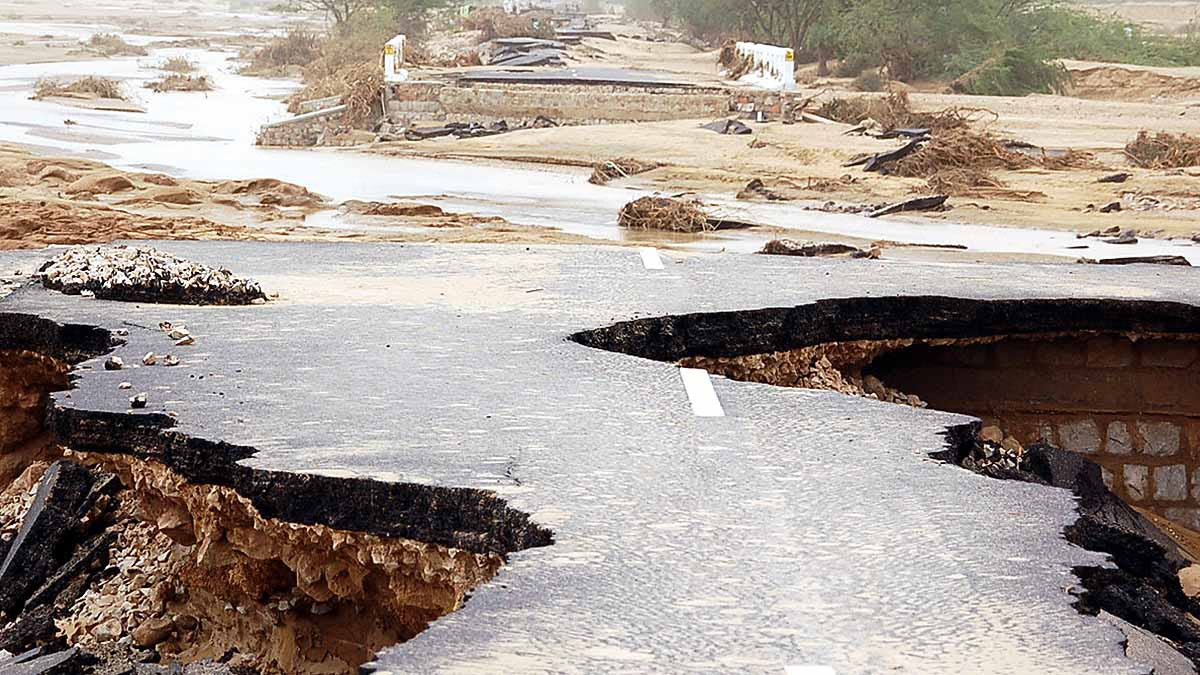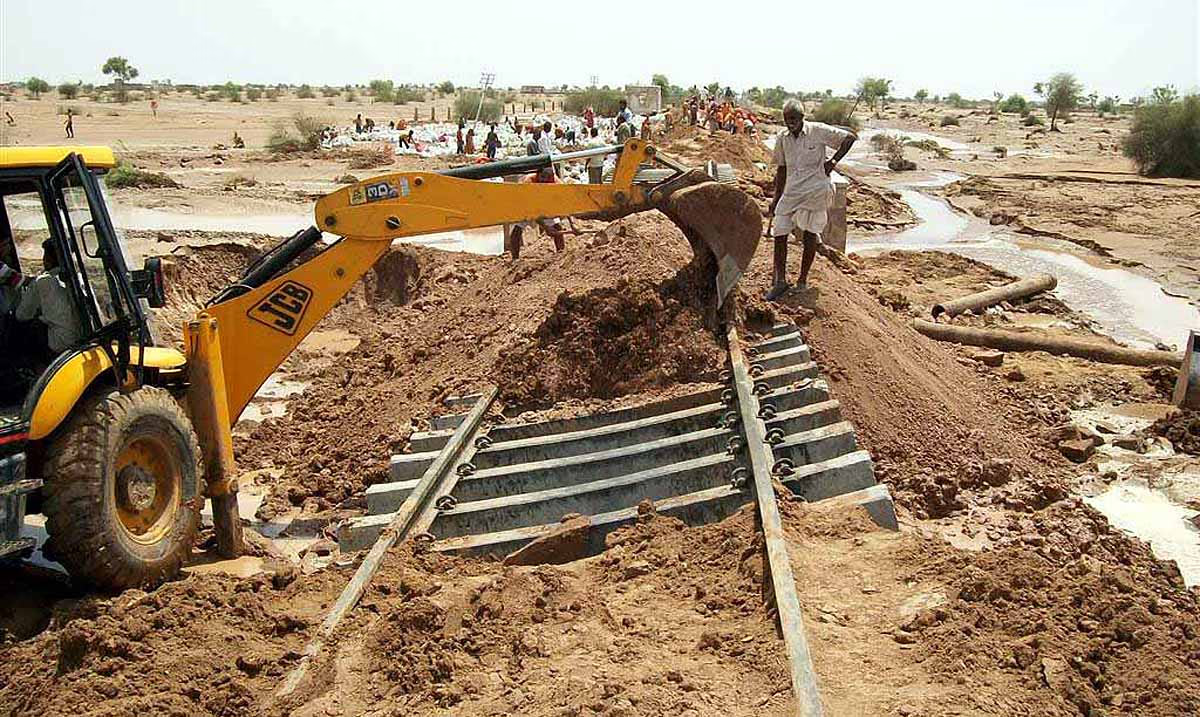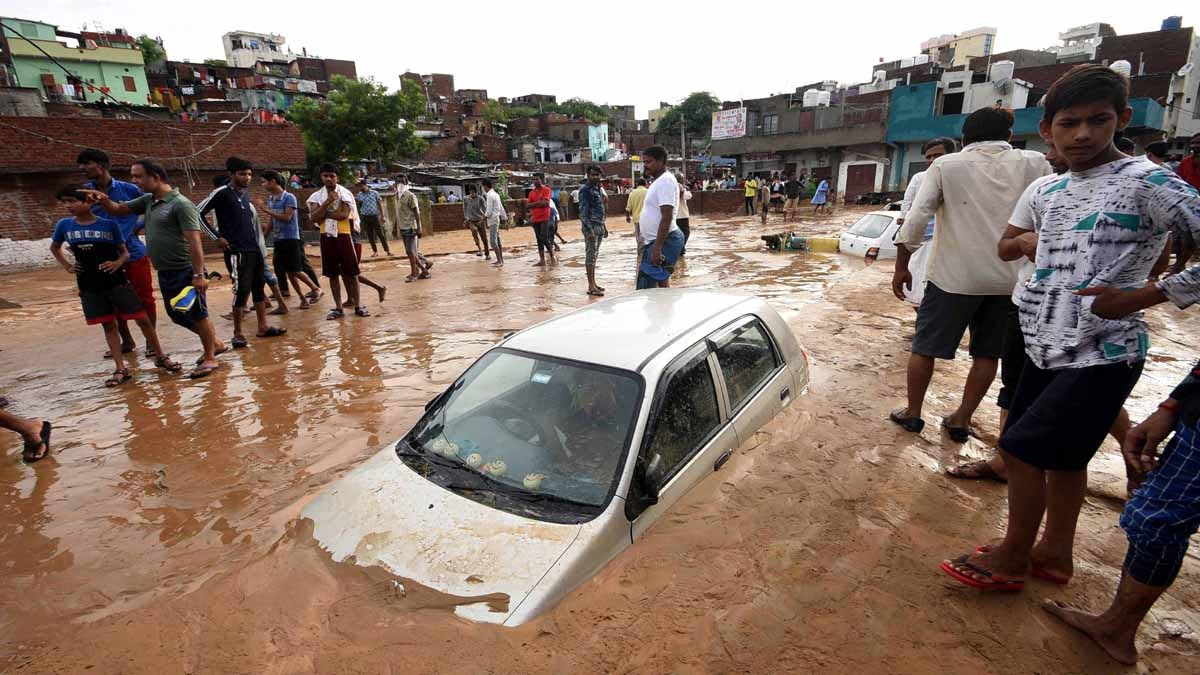The flood situation in Rajasthan in 2025 was alarming. Heavy rains starting in July impacted desert areas like Barmer, Jodhpur, and Jaisalmer. Between July 13-16, eastern Rajasthan, particularly Jaipur, Kota, and Bharatpur, experienced 135% more rainfall than average, creating flood-like conditions.
Roads were submerged, homes were inundated, and several villages were cut off. The Meteorological Department issued alerts while the SDRF carried out rescue operations. This changing climate signals damage to crops and infrastructure, prompting government relief efforts.
Key Points on Rajasthan's Changing Weather
Research suggests that annual floods in Rajasthan's desert could be a sign of climate change in India.
Over the past five years (2020-2024), desert regions witnessed several floods, notably in August 2024 and August 2021.
Shifts in rainfall patterns, such as an increase in days with heavy rain, possibly indicate climate change.
This impacts life, property, agriculture, and infrastructure.
Flood Events Over the Last Five Years
Several flood incidents occurred in Rajasthan's desert areas in recent years. Intense rain in August 2024 led to severe flooding in desert parts, affecting sections of Kutch and Rajasthan. In July 2023, heavy monsoon rain impacted eastern and central Rajasthan, affecting desert areas too.
In August 2021, Jalore, Sirohi, and Barmer districts faced flood-like situations, with 59 people rescued. While specific data for 2020 and 2022 is unavailable, there's a general increase in rainfall and flood events across Rajasthan. These incidents reveal a rising frequency and intensity of flooding in regions traditionally known for aridity and low rainfall.
Climate Change Signals in India
Climate change in India is evident, especially in shifting rainfall patterns...
Changes in Rainfall Patterns: According to IMD data from 1989-2018, the number of days with 'heavy rainfall' (over 65 mm) has increased, particularly in western Rajasthan, indicating more rain over fewer days, contributing to floods.
Increased Rainfall Volume: In 2016, western Rajasthan saw continuous rain for 18 days, recording over 120 mm in a single day. In late August 2006, Barmer district received 750 mm of rain, five times its annual average, resulting in over 300 deaths.
Future Predictions: Research by the Max Planck Institute suggests a 20-35% increase in rainfall in western Rajasthan during 2020-2049 compared to 1970-1999, with a 5-20% rise in eastern Rajasthan. A 2009 report by the Swiss Agency for Development and Cooperation states that by 2071-2100, single-day rainfall may reach 20 mm, while five-day rainfall could hit 30 mm.
Rise in Cyclones: An increase in cyclone number and intensity in the Indian Ocean, such as Cyclone Biparjoy in 2021, has led to heavy rains and floods in Rajasthan.
These signals indicate India's changing climate. Even arid regions like Rajasthan are experiencing increased rainfall and flooding.
The Impact of Climate Change
The effects of climate-induced floods are severe...
Loss of Life and Property: The 2006 Barmer floods killed over 300 people. The 2024 and 2023 floods also caused casualties, straining local communities.
Infrastructure Strain: Roads, railway tracks, and other infrastructures are destroyed by floods, halting economic activities. Roads and rail tracks were hit by floods in 2023, disrupting transportation.
Agricultural Impact: Excessive rainfall and floods damage crops, leading to economic losses for farmers. In desert regions, where farming is already challenging, this is particularly severe.
Ecosystem Pressure: Sudden floods in desert areas disrupt ecosystems, impacting biodiversity and natural resources, potentially affecting long-term environmental stability.
Floods in Rajasthan's desert are a clear sign of climate change in India. Over the past five years (2020-2024), the area has seen repeated floods, with significant events in 2024 and 2021. Changes in rainfall patterns show an increased frequency and volume of heavy rain days.
Future predictions warn of further increases in such events. To tackle this, Rajasthan needs to update its Climate Action Plan and focus on flood management. Globally, increased efforts to combat climate change, such as reducing carbon emissions and promoting renewable energy, are also crucial.

Source: aajtak

Source: aajtak
Rainfall shifts are alarming...

Source: aajtak




